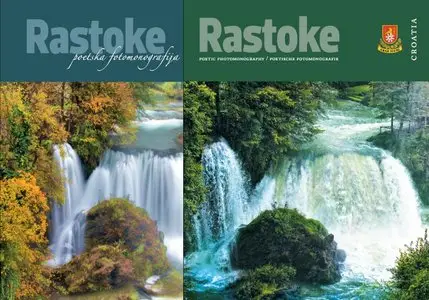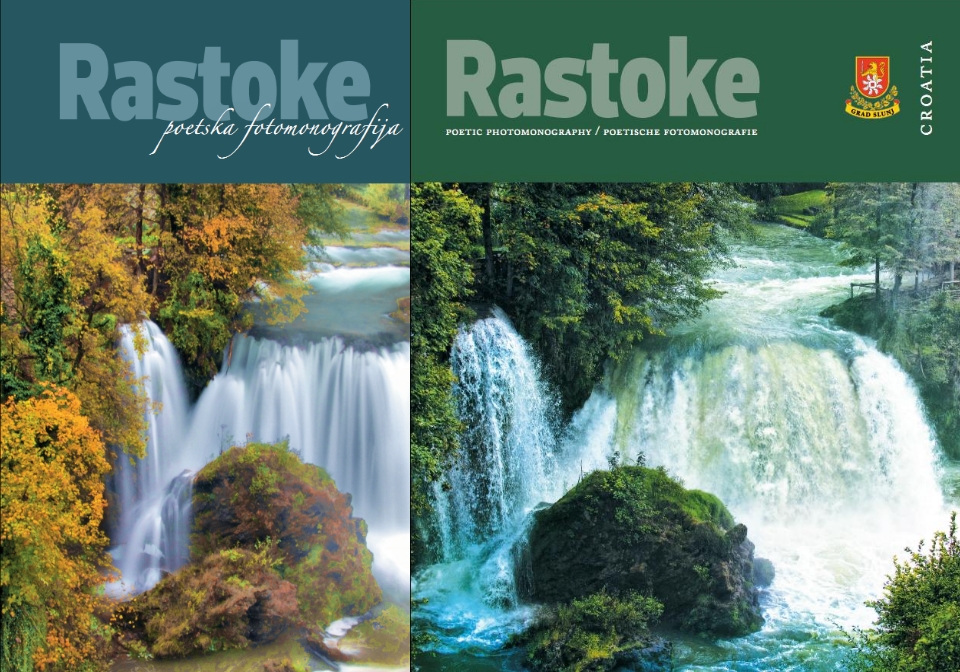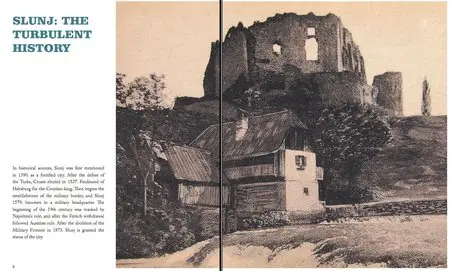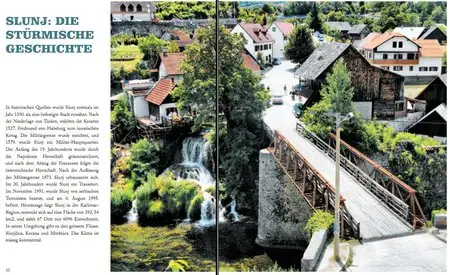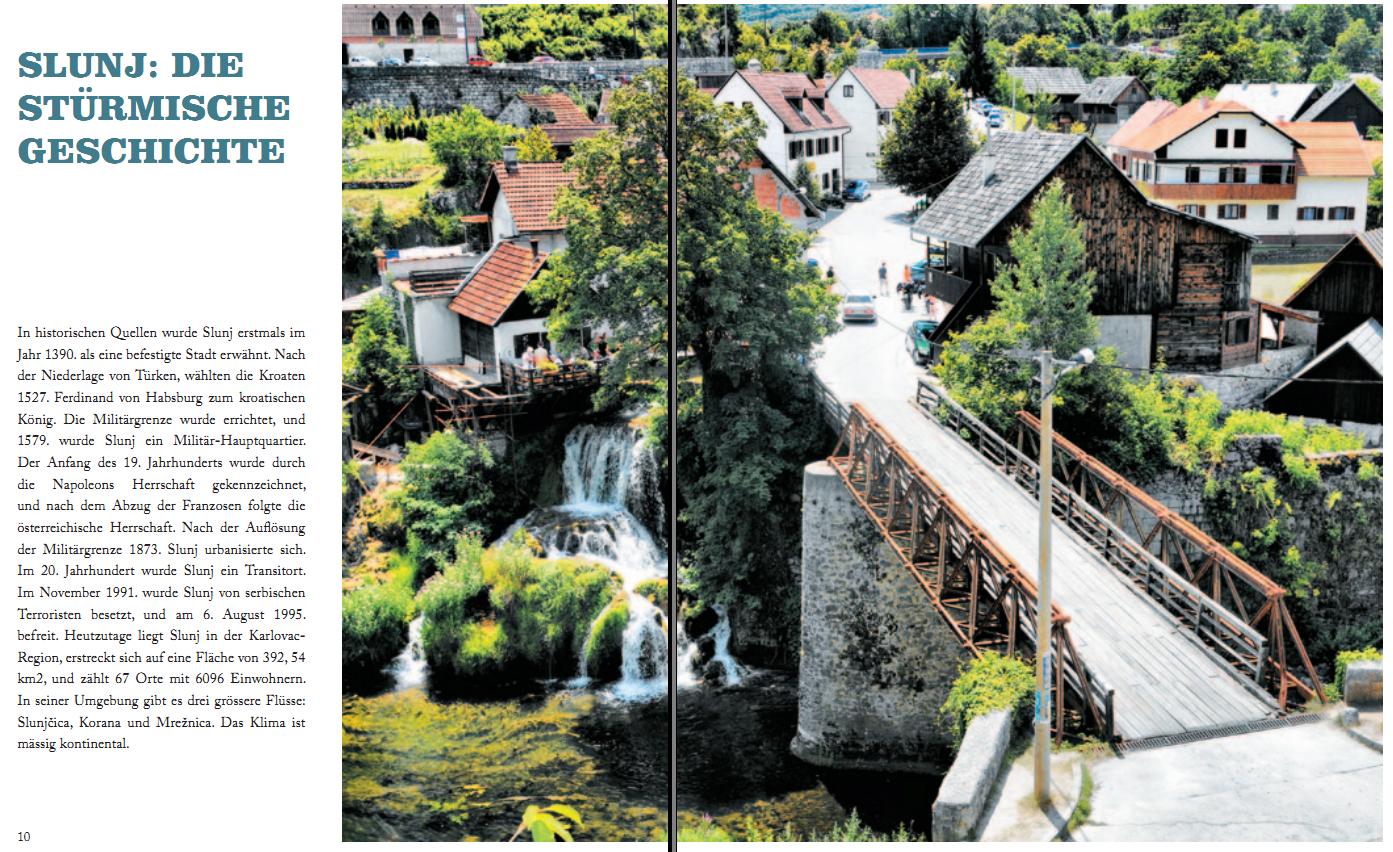Rastoke: Poetic Photomonography / Poetische Fotomonografie / Poetska Fotomonografija
Publisher: Maxi d.o.o. | 2011 | ISBN: 978 9535627364 | English/German/Croatian | True PDF | 98+100 pages | 50.29+41.48 Mb
Publisher: Maxi d.o.o. | 2011 | ISBN: 978 9535627364 | English/German/Croatian | True PDF | 98+100 pages | 50.29+41.48 Mb
(En) Rastoke [ˈrastɔkɛ] is the historic center of the Croatian municipality of Slunj. This old part of Slunj is known for its well-preserved mills and the picturesque little waterfalls along the Slunjčica river, which flows into the river Korana at this place. The Korana river originates at Plitvice Lakes National Park.
At Rastoke, similar natural phenomena are occurring as at the Plitvice Lakes. This location is therefore often being referred to as "the Small Lakes of Plitvice". Both locations are interconnected by the Korana river. Rastoke is a place of autochthonous ecologic and ethnographic significance due to its symbiosis of natural and civilizational features.
The town of Slunj emerged around Rastoke and the branching of the Slunjčica and Korana rivers. The watermills erected at this place largely contributed to the economic development of Slunj as the center of the region of Kordun.
(De) Die Rastoke [ˈrastɔkɛ] stellen den historischen Kern der kroatischen Stadt Slunj dar, welche am Zusammenfluss der Flüsse Slunjčica und Korana liegt. Die Bezeichnung Rastoke lässt sich im Deutschen auf die folgenden Bedeutungen zurückführen:
• Einerseits ist dies eine Flussverzweigung. Die Slunjčica, welche von der lokalen Bevölkerung Slušnica genannt wird, wird an dieser Stelle in mehrere kleine Flussarme geteilt. Sie fließt dann über zahlreiche Kaskaden und kleinere Wasserfälle in die Korana.
• Andererseits wird so Kalkgestein bezeichnet, aus dem mittels Kohlensäure Calciumcarbonat gelöst wird (kroat. rastopina, rastok). Somit bildet sich stets neues Gestein durch gelöstes und wieder sedimentiertes Calciumcarbonat.
In Rastoke kann man in etwas kleinerem Format die gleichen Naturphänomene beobachten, welche auch für die Plitvicer Seen charakteristisch sind. Daher werden die Rastoke oft auch als die „kleinen Plitvicer Seen“ bezeichnet. Als Korana bezeichnet man den Fluss, der nach den Plitvicer Seen weiter gen Norden fließt. Slunj und die Rastoke sind also auf dem Wasserweg direkt mit den Plitvicer Seen verbunden.
Entlang der Flussverzweigungen der Slunjčica entstand die Stadt Slunj. Bereits im 17. und 18. Jahrhundert wurden hier auch zahlreiche Wassermühlen errichtet. Diese idyllischen Mühlen waren noch bis Mitte des 20. Jahrhunderts in Verwendung. Auch heute noch kann man die Funktionsweise einiger dieser Mühlen und den damaligen Alltag der Bevölkerung kennenlernen.
Edition: English/German - 50.29 MB
FileSonic.com | WupLoad.com
Edition: Croatian - 41.48 MB
FileSonic.com | DepositFiles.com
Welcome to my Blog
FileSonic.com | WupLoad.com
Edition: Croatian - 41.48 MB
FileSonic.com | DepositFiles.com
Welcome to my Blog


